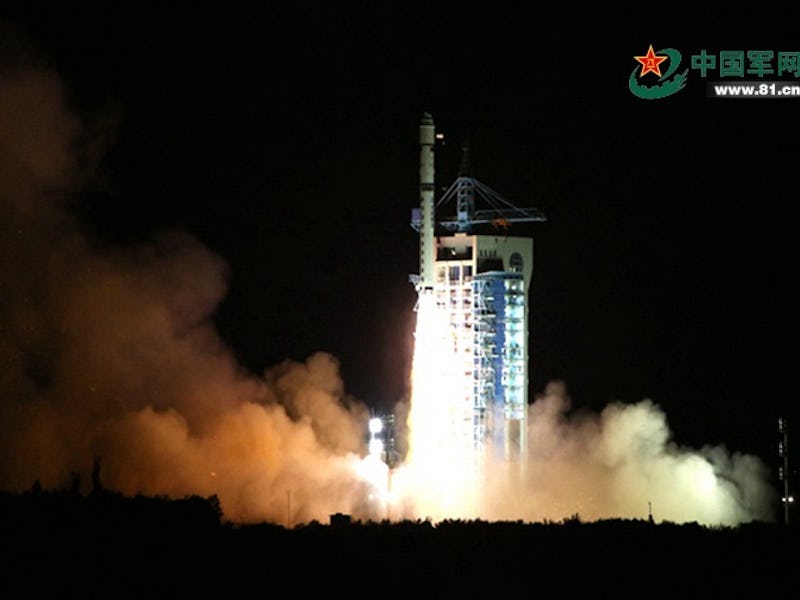Chinese Scientists Launch the Global Quantum Space Race
The quantum internet could change the world.

When famed physicist Niels Bohr proposed the idea of quantum entanglement in the 1930s, it was so crazy that Albert Einstein laughed it off as “spooky action at a distance.” How could two individual particles, separated by potentially infinite stretches of spacetime, behave in tandem?
Since then, scientists have witnessed and demonstrated quantum entanglement as a real phenomenon time and time again in laboratory settings. Scientists have repeatedly shown that two separate particles really can stay twinned when they move apart, and the act of observing one immediately impacts the other. The findings could have profound implications for the way communications satellites share secrets — if only they could exhibit the same effects in space.
Now, a team of Chinese scientists have achieved exactly that.
As reported Friday in the journal Science, a group of researchers has demonstrated that spooky action in space — across the largest distance ever recorded. Their findings will spark an arms race in communication technology that could transform the way governments keep and transmit secrets, the internet, and the speed of global information-sharing.
Without quantum entanglement, the only way for people in two different spots to share a secret password is to send a carrier — a trusted ally, a letter, a pigeon with a tattoo on its feet, whatever — across the intervening distance. Quantum entanglement, in theory, allows interlocutors to go through the steps of secret communication in a bizarre, out-of-order sequence: First, send entangled particles to two different spots and compose a message in one spot. Encode that message using the pattern of entangled particle states on that end. Send it, thus encoded, using normal wires or radio waves. Finally, decode it using the pattern of particles on the other end.
No legible information passes between the two spots for others to read, and the passcode transfer is instant. (That instant transfer is why Einstein doubted the phenomenon, which seems to violate the speed of light, as defined in his theory of general relativity.)
China isn’t the first country to achieve quantum entanglement. Previous experiments have successfully separated entangled particles by as much as a mile before. But those studies all encountered the same big problem: In order to separate those particles, they had to be sent through some medium, like a fiber-optic cable. And the longer that cable was, the more particles get destroyed along the way.
The Chinese experiment creates and entangles the particles in a single satellite in space, known as Micius, and then beams them down to two separate locations on Earth with a powerful laser. There’s a lot less stuff to get in the way and destroy entangled particles when they’re sent from space, so the particles can be transmitted across much greater distances. In this experiment, the particles ended up in labs more than 745 miles apart from one another. That’s a big deal, and a major step toward a true quantum encryption system. Other countries, not wanting to get left behind, are likely to follow suit.
But it’s important to realize that just separating entangled particles in one experiment isn’t enough to set up a true quantum-encrypted internet. Each entangled particle pair can only be “read” once in the process of creating a secure quantum key. Want to create a new key? Gotta send some new entangled particles. That requires a much more complex infrastructure than the Chinese researchers set up for this experiment.
Still — this is a big first step.